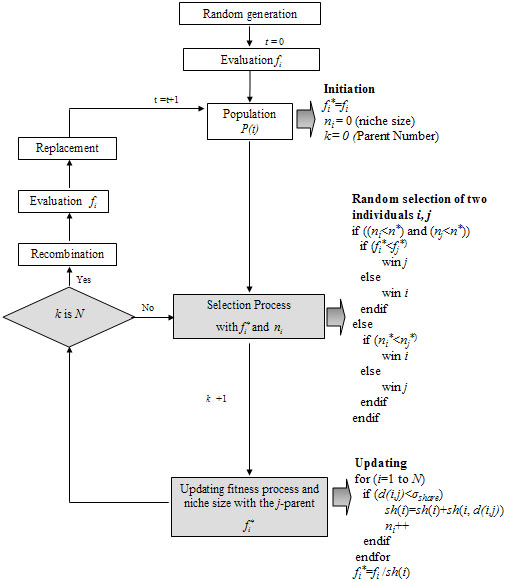|
Classic
Fitness
Sharing
(FS) was the first method
on multi-modality in GAs. It
is based on the penalization of the
areas of the searching space with more
solutions within the population. This
way, solutions belonging to densely
populated areas will see their
quality decreased in order to allow the
exploration of other sparsely populated
areas. The selection process uses the
shared fitness of individual i (fi*)
defined as the original fitness (fi)
divided by the sharing function,
Sh(d(i,j)) (see Equation 1):

where the sharing function depends on
the distance between individuals i
and j (d(i,j)) according
to Equation 2.

This
method is applied prior to the selection
process. Firstly, it starts with the
measurement of the distance between the
first solution in regard to the rest of
the solutions of the population,
calculating the accumulated value of its
sharing function. Once the test of all
the population is finished the shared
fitness is calculated by dividing the
original quality by the sharing
function. This process is repeated with
all the solutions, until every modified
quality is obtained, and at this point
the parents selection is performed.
This
process is shown in the following
flowchart:

The main disadvantage of the methods
based on the niche radius is the a
priori ignorance of the most suitable
value of this parameter. Therefore a prior experimentation
is necessary to adapt the method to each type and size
of problem.
Later studies proved that this method
had some restrictions. Firstly, it
should be applied with the less biased
selection methods, as for instance with
the stochastic universal selection (SUS)
or with the stochastic remainder
selection (SRS). Secondly, this
method is not able to maintain the
detected niches in the first generations
stable during later generations in
problems with high difficulty (whether
by a large number of optima or by
deception in the landscape).
|

